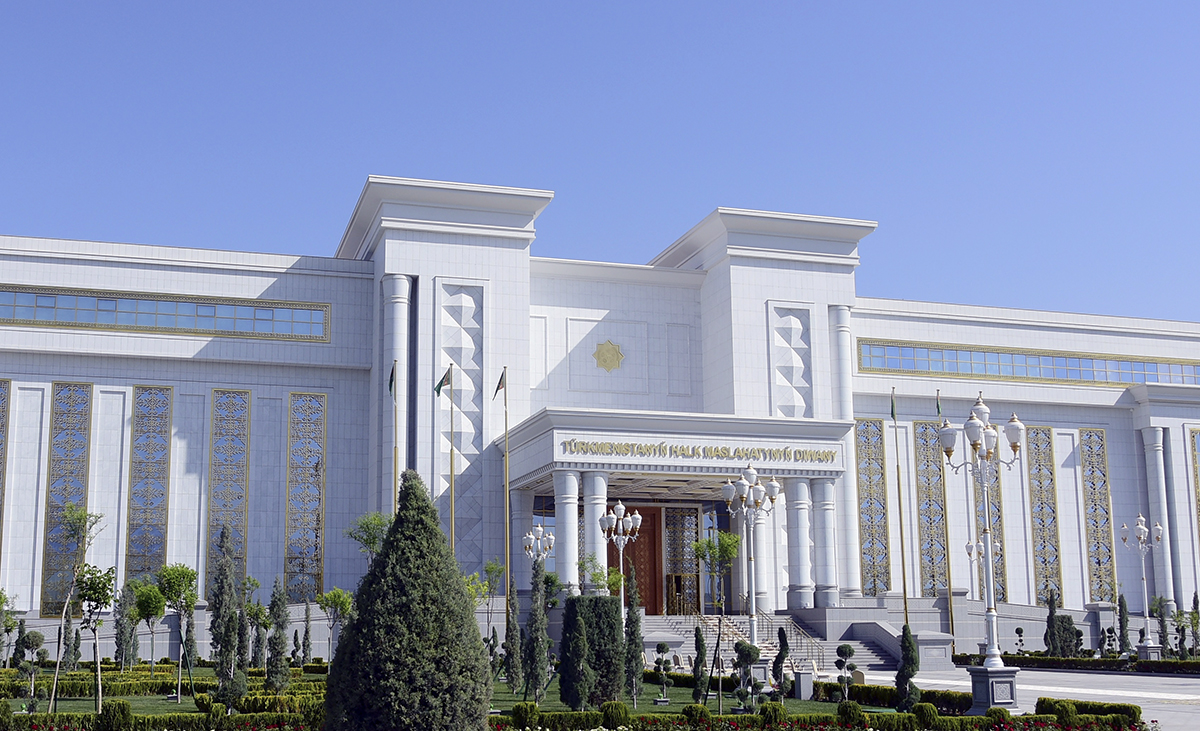.. Once there was a flourishing capital city situated on the Great Silk Road. Its extant minarets are unique specimens of the architectural and engineering thought of the medieval East which have very few analogues not only in Turkmenistan but also throughout Central Asia.
This is ancient Misserian which is now a part of the Old Dehistan Historical and Cultural Reserve located in Etrek Etrap in Balkan Velayat. There are dozens of ancient monuments, each of which is interesting itself.

In written sources about the monuments of Dehistan the minarets of Misserian are usually referred to as the North (XII century) and South (XIII century). The northern one is also called the minaret of Ahmed Jafar who ruled Dehistan in those days. In the heyday of the city (X-early XIII century) there was much more minarets like that. The edges of the foundations of several constructions of this type were discovered during the excavation. The two minarets located beyond the pinion wall in the southern and northern rabad (the suburbs surrounding the fortified walls of the city). Another three were located in the shahristan inside the fortified walls.
In the Middle Ages the minarets were built in most cases near mosques and formed with them a single architectural ensemble. The main purpose of minarets was calling the faithful to prayer, therefore the key ‘employees’ of these high-rise buildings were muezzins who call people to prayer. It may well be so that the minarets performed the guarding, patrolling and communicating functions. This assumption comes when one sees the arrangement and location of apertures in the walls of the minarets. They were square outward and tapering inwards and used for ventilation and lighting the inside of the building in the daytime. Also, these high-rise buildings served as some kind of beacons for caravans and travellers wandering in vast expanses of the Caspian region.

The word minara or minar means to shine in Arabic. One can imagine the lights of special ceramic lamps “chyra” burning on the balconies of the minarets at night serving as a reference point for wanderers.
The North minaret is the oldest. Its geometric pattern which belongs to the meander style stores the valuable historical information. The Kufic inscriptions like three bracelets girdle the minaret. An orientalist A.A. Semenov was the first in the early 20th century to try to decipher the inscriptions. Using the photofixation methods invented by B. N. Kastalsky he read the text inscribed on the middle belt of the minaret: Ali-builder worked, by order of Abu-Jafar Ahmad a of son of Abdul-Agarra.”
In the late 1940s the UTAKE expeditions conducted the large-scale research activity in Dehistan. M. E. Masson, who led these expeditions, made the following interpretation of these inscriptions. “In the Name of Allah, the Merciful and the Compassionate! A blessing from Allah. From that Abu Jafar, a son of Abul-Agarra, the ruler of Rabat (fortress) ordered, may Allah exalt him! This is a work of Ali, a son of Ziyad.” Though the elements of the lowest belt located slightly above the entrance were lost, he was able to date the northern minaret 495 AH which corresponds to the 1104/05 AD
The constitution of both extant minarets is similar. They consist of two shafts, the exterior one is hollow and cone and the interior one is three metres in diameter. They are connected with a spiral brickwork staircase. Minarets certainly play a significant role in an architectural ensemble of the city. Slenderness and height of minarets are characterised by medieval authors as the essential characteristics. For example, Makdisi mentioned the minaret in Ahur, the second largest city in this region after Dehistan, which was seen from afar. Nowadays the Malay site of ancient settlement located 45 kilometres from Misserian reminds of it…
Today the silhouettes of the minarets can be seen from afar Misserian. One can imagine how spectacular they looked against the backdrop of a medieval city with numerous domical buildings, the castellated line of the impregnable fortified walls framed with towers…
Such are two monuments in Dehistan only. So many interesting, surprising things are hidden around here. And we are ready to tell about them to tourists who like our story.






